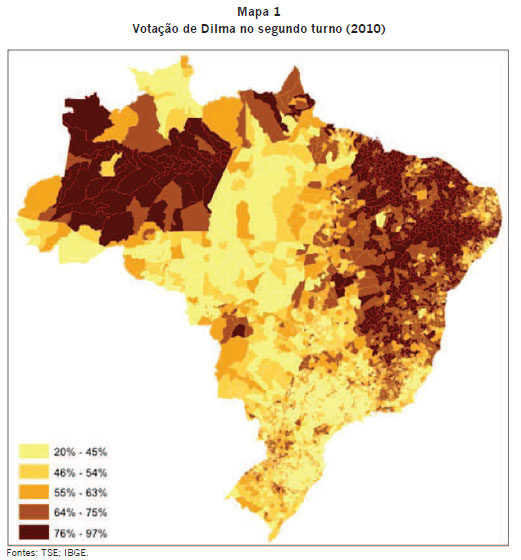Why do nearby towns tend to have similar electoral results? We test here three possible explanations: social interactions between inhabitants of nearby towns; the concentration of campaign strategies in some areas to the detriment of other areas; and the socioeconomic similarities of nearby towns. Using data from the 2010 elections and spatial econometrics, we rejected the first hypothesis; we found some preliminary support for the second hypothesis; and we found unequivocal support for the third hypothesis. The data also show that Dilma Rousseff "inherited" Lula's electoral basis of support and that this is quite different from that of the PT, which remains an urban-based party.
electoral geography; spatial econometrics; Workers' Party









